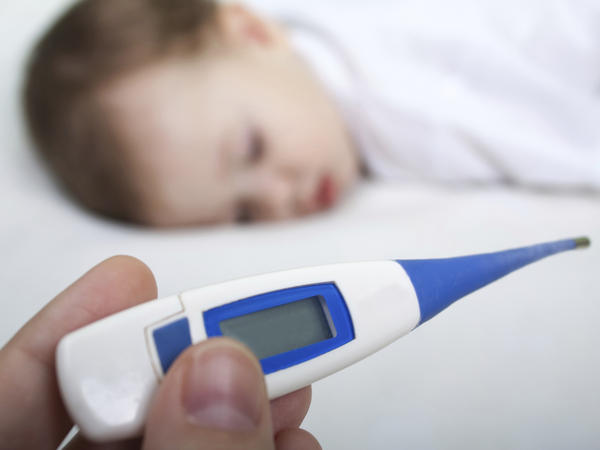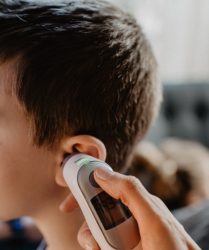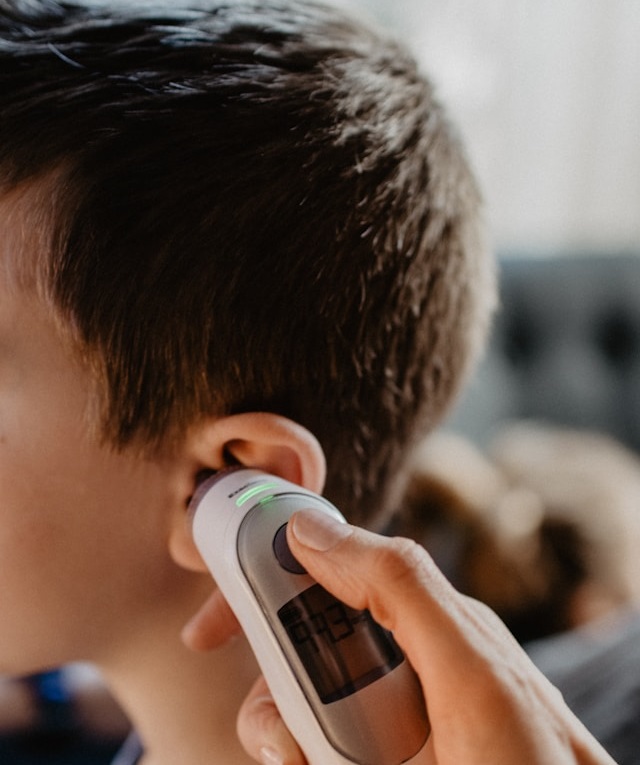If there was one lesson I learned from my painful struggle with FQ toxicity, it was to be vigilant and informed about what goes into my body. I learned a great deal about the abundance of chemicals and genetically modified organisms (GMOs) in our food supply. I became an advocate for organic food, natural products and a life with as few medications as possible. One thing I still failed to question, however, was the safety and efficacy of vaccines.
Vaccine Side Effects: Learning the Hard Way
I’m a health psychologist, a teacher and researcher by trade. I have read about and believed in the public health benefits of vaccines since I became pregnant. After all, no matter your stance on the vaccine issue, no mother wants to see their child get severely ill from a preventable illness like measles. Having suffered tremendously in the early years of my child’s life with my own health issues, I wanted to make sure she was as healthy as possible, and I believed that vaccines were the best way to protect her health and her life, for that matter.
My daughter had her first fever of unknown origin at just 16 months old, shortly after a round of vaccinations. The fever reached 104 degrees and did not respond to Tylenol or Ibuprofen. She had no appetite and vomited when the fever would spike. I took her to our pediatrician and was told it was likely a virus. However, the doctor was perplexed as to why the fever was not coming down with fever reducing medication. We put her in tepid baths and held her for three days until the fever finally broke. My daughter seemed to bounce back quickly and we believed the pediatrician’s diagnosis that she had somehow caught a virus that caused her high fever. When the same fever returned four weeks later, I took her back to the pediatrician for answers. This time, she presented with a red throat, but the rapid strep test was negative. We were sent home with a diagnosis of another virus. My daughter again recovered after 72 hours, but I was uncomfortable with the diagnosis. Something just did not seem right. We were told that kids that young often get viruses and we should expect up to 7-12 illnesses a year. However, my daughter was not in daycare, and I was notorious for washing hands. Where was she picking up these viruses? To my knowledge, she had not been exposed to anyone who had been sick.
Cyclic Fevers
Four weeks later my daughter spiked another high fever in the middle of the night, and would vomit when the fever would reach it’s highest, generally around 24 hours after it first began. Tylenol and Ibuprofen only took the fever down one or two degrees, but this time I knew what to expect. I took her to our pediatrician, and once again, my daughter presented with a red throat and a negative strep test. We were sent home yet again with a diagnosis of a virus, but I knew in my heart something more complicated was going on. The month before, I had become even more vigilant about hand washing, and would use hand sanitizing wipes whenever we went out. I kept her home and out of the public as much as possible, because I had a feeling that we might be dealing with an immune system issue.
Mystery Diagnosis: Periodic Fever, Aphthous Stomatitis, Pharyngitis, and Cervical Adenitis (PFAPA)
Given my training as a scientific researcher in the health field, the first place I went was the scientific literature. I typed “cyclical fever” into the Pubmed search engine. I came across this article and was introduced to a periodic fever syndrome called PFAPA (periodic fever, aphthous stomatitis, pharyngitis, and cervical adenitis). With PFAPA, children spike a high temperature every 2-8 weeks, usually with eerie periodicity, and often present with pharyngitis, swollen glands, and mouth sores. Fever reducers are usually ineffective. My daughter certainly had the high fever and the sore throat that seemed to come almost exactly four weeks apart. I continued with my research, and read that PFAPA can present with a variety of combinations of the above named symptoms (and other possible symptoms such as joint pain and headaches), but the hallmark is the regularly occurring high fever. PFAPA is generally not harmful to a child’s growth or development, and children eventually grow out of it before their teen years. Regardless, it is still extremely difficult to watch your child suffer month after month for days at time. PFAPA children often miss up to 30 or more days of school a year; vacations and childhood activities are often interrupted by illness, and children can suffer distress over being chronically ill. Many PFAPA children also experience febrile seizures from temperatures consistently reaching 105 degrees or higher.
I called my pediatrician, who had heard of PFAPA but assured me that it was rare and not a cause for concern at the moment. He suggested taking a watchful waiting approach. I agreed, as I did not want to subject my daughter to unnecessary testing. But when the fever occurred again three and a half weeks later, I became more forceful in my request for additional testing. Periodic fevers can also be caused by serious syndromes including cyclic neutropenia and juvenile rheumatoid arthritis (JRA), and I wanted to know what we were dealing with so I could get her treatment as soon as possible. We were referred to an infectious disease specialist at our local Children’s hospital who was able to rule out those alternate diagnoses.
After meeting with my pediatrician, PFAPA literature in hand, I requested a referral to a pediatric ear, nose throat specialist (ENT). In my research I discovered the only known cure for PFAPA (besides the natural progression of “growing out of it”) was a tonsillectomy, which fully ceases attacks in about 80% of cases. Although there is still much unknown about the etiology of the disorder, scientists have found that during PFAPA flares, IL-1–related, and IFN-induced genes are overexpressed, and when the child is healthy, gene profiles look normal. To put it simplistically, as an attack develops the body creates an inflammatory response to a phantom infectious agent by retaining T-cells in the tonsil tissue. By removing the tonsils, there becomes no place for these cells to congregate and episodes abort. I was granted the referral to the best pediatric ENT in our region of the country. He was familiar with PFAPA and agreed to perform the tonsillectomy on my daughter at the tender age of just 27 months. At the time of her surgery, ten months after her first fever, she had experienced twelve PFAPA episodes. Since her surgery, I’m happy to report that my daughter has been PFAPA-free for one year.
Autoimmune/Autoinflammatory Syndrome Induced by Adjuvants (ASIA)
Although I’m beyond grateful for her recovery, the story does not end there. I was still plagued with the “what caused this?” question. From my detailed and lengthy research, its seems doctors are still uncertain. What they do know is that unlike other periodic fever syndromes, there has not yet been a definitive gene identified for PFAPA, leaving much speculation to environmental causes. PFAPA is classified as an autoinflammatory disorder with the involvement of both innate and adaptive immunity. What could have caused her immune system to become so erratic?
My research revealed some possibilities. The first and most likely, in my opinion, was vaccinations. It was once believed that adjuvants in vaccines, such as aluminum, were not harmful and caused no independent threat, but more recently, scientists have concluded that adjuvants can induce autoimmune and autoinflammatory disorders in both human and animal models. In fact, adjuvants like aluminum are designed to create an inflammatory response in order to better facilitate the body’s production of antibodies to the antigen in the vaccine.
Only in the last few years has the scientific community began to formally recognize the role of adjuvants in inducing autoimmunity/inflammation. To date, a handful of syndromes have been identified as being associated with exposure to an adjuvant: siliconosis, the Gulf war syndrome (GWS), the macrophagic myofasciitis syndrome (MMF), and a less specific cluster of symptoms referred to as “post-vaccination phenomena”. PFAPA children show many of the clinical manifestations of ASIA post-vaccination phenomena, including fever, arthralgias, increased erythrocyte sedimentation rate, skin rashes, and sleep and gastrointestinal disturbances. Furthermore, PFAPA children would meet many of both the major and minor criteria for diagnosis of ASIA.
I am not arguing that PFAPA is likely induced by vaccines alone. I recognize that my daughter likely holds an unidentified genetic susceptibility to this syndrome. In fact, although not conclusive, new research is beginning to identify candidate genes for the syndrome. I do believe, however, that vaccines were the environmental trigger that likely caused the gene(s) expression to be altered. I am also not arguing that all cases of PFAPA are induced by vaccinations. Other environmental triggers in combination with genetic susceptibility such as illness, stress, trauma, allergies or other toxins may play a role.
Vaccine Safety and Advocacy: Incompatible Arguments
As mentioned before, I had always supported vaccination programs and acknowledged them as a pillar of public health efforts. Since my daughter’s diagnosis, I feel discouraged and confused regarding vaccinations. I’m discouraged because it seems parents have no other options for immunization other than vaccinations that contain harmful adjuvants like aluminum. Although I recognize that my daughter may have had a genetic susceptibility for PFAPA, I have put together an evidence-based argument that her syndrome was triggered by her vaccinations. I have done so through careful research, collaboration with her physicians, and through the process of elimination of other causal factors. My research has also convinced me that many children who suffer from autoimmune or autoinflammatory syndromes may have had healthy childhoods had they not been exposed to routine vaccinations. Unfortunately, medical science has not yet reached the point of being able to easily identify susceptible children and prevent this phenomenon from occurring.
With that being said, I still do not want to see my daughter suffer from something worse than PFAPA, including deadly diseases like meningitis. How can one argue for vaccine safety while still acknowledging the benefits of being protected by immunizations? In my experience: you can’t. They are incompatible arguments that create cognitive dissonance. You simply cannot say, “Vaccinations are a good thing, except they are not safe.” The minute you begin fighting for vaccine safety is the minute that you begin to be ousted by the medical community and anyone else that vaccinates their children, for that matter. You are immediately put into the category of “anti-vaxxer”, and people stop listening before your argument even begins. The backlash against those who question vaccine safety is quite biased, largely unwarranted and, in my opinion, offensive.
I am still unsure of how to proceed regarding my daughter’s remaining vaccinations. I have spoken with her physician about formulating a plan on what is best for her health at this time. By discontinuing her vaccinations, I run the (probably small) risk of exposing her to potentially dangerous diseases. If I choose to continue vaccinating her, I run the (probably large) risk of negating the effects of the surgery, which to date is the only known cure for PFAPA. I have heard several stories from parents of PFAPA children whose child’s fevers returned post-surgery after a round of booster immunizations. Apparently, in these cases, the body chooses another route for the inflammatory response after the tonsils are removed. Alas, the vaccine argument is not as black and white as many propose, and it is unfair and inaccurate to treat it as such.
Vaccine and Medication Side Effects: Neither Rare nor Insignificant
The vaccine manufacturers and even some scientists maintain that adjuvant-induced syndromes are rare. In contradiction, however, the literature also states that (like with fluoroquinolones) the manifestation of these syndromes can be delayed for weeks or even years after exposure to the adjuvant. Therefore, it is unlikely that we have any sort of accurate estimate of how many individuals have developed autoimmune or autoinflammatory syndromes caused by vaccinations. As one scientist states,
“…this global view of ASIA probably represents only the tip of the iceberg. Encouraging physicians and patients to report adjuvant-related conditions will enable a better estimation of the true prevalence as well as the width of ASIA spectrum. It seems that the role of adjuvants in the pathogenesis of immune-mediated diseases can no longer be ignored, and the medical community must look towards producing safer adjuvants…”
Indeed, with the rise of complicated idiopathic illnesses occurring alongside the rise in prescription drug use and lengthened vaccination protocols in America, scientists and medical practitioners should be increasing their focus on pharmaceutical safety. Although this correlation does not imply causation (one could argue that the rise in prescription drug use is due to the rise in illness caused by other factors), causal relationships between adjuvants and these types of illnesses have already been demonstrated, warranting further investigation. Many people, including children, are suffering tremendously with complex and painful syndromes while their causes continue to be ignored by the medical community despite overwhelming scientific evidence for their existence. Their suffering is viewed as rare, therefore insignificant. I’m left wondering, how can a child’s suffering ever be insignificant?
We Need Your Help
Hormones Matter needs funding now. Our research funding was cut recently and because of our commitment to independent health research and journalism unbiased by commercial interests we allow minimal advertising on the site. That means all funding must come from you, our readers. Don’t let Hormones Matter die.
Yes, I’d like to support Hormones Matter.
This story was published originally on Hormones Matter in May 2014.













